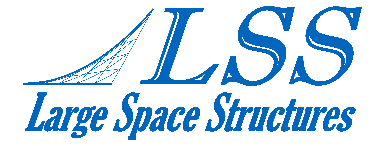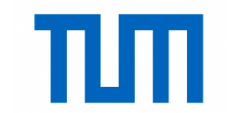-
StatusOngoing
-
Status date2025-08-15
-
Activity Code5B.155
The previous Reconfigurable Antenna Optics (RAO) project (Advanced Research Telecommunications Systems (ARTES) 5.1 Reconfigurable Antenna Optics) aimed to evaluate the feasibility of reconfigurable reflector antenna by shaping its surface in flight. This feasibility has been demonstrated. The surface accuracy achieved on the demonstrator of the RAO project was close to the objectives but needed to be improved before to envisage a flight model application in Ku-Band.
This new project aims to pursue the investigations and remove the main critical risks associated to this technology. Getting a very good surface accuracy, therefore the flexible shell improved design and Radio Frequency (RF) / mechanical performance, is the main challenges of the project.
The surface accuracy in Ku-Band shall be better than 200μm with respect to a nominal surface (RMS) in order to reach a high level of RF performances. To reach such a high level of accuracy (with a low/limited number of control points), the silicone front layer with carbon black must be removed, the flexible shell stiffness shall be increased and the patches layout linked to mechanical actuators shall be adapted. The behavior of the flexible shell of the current design is geometrically nonlinear. One of the keys for accuracy improvement will be to reduce the non-linearities.
A major reflex project challenge is working to define efficient reconfigurable antenna solutions, ensuring strong RF performance, while ensuring low cost and mass. Achieving the right balance between performance, mass, and cost is complex. Additionally, designing an effective holding and release system for the flexible reflector is critical, especially as sizing for multiple actuation lines could greatly increase overall mass. For single-shape shell reflectors reconfigured on the ground, achieving high-surface accuracy with acceptable increased mass and cost is key. The flexible shell layout, backing structure, and strut count will be evaluated with a feasibility mockup; increased bending stiffness may influence design.
The utilisation of an in-orbit reconfigurable antenna would allow the telecommunication operator to modify the antenna pattern at any time during the satellite lifetime and thus the mission addressed by the antenna. As a consequence, this would allow the operators the opportunity to capture new business. As a benefit for both the telecommunication operators and the space industry, this would also bring the possibility to select the initial mission of the antenna very lately in the development phase of the satellite programme or even after the satellite launch. The main advantage of mechanical reconfigurable antenna, is the good level of achieved RF performances which can be benchmarked to the ones obtained with a conventional shaped reflector antenna. This point is deemed as very important for the operators who do not want to lose performances for flexibility).
The first antenna solution is a simple offset reflector antenna (1-metre-diameter family) with an in-flight reconfigurable main reflector composed of a flexible shell and a set of mechanical actuators. The second one uses a not-reconfigurable shaped membrane reflector antenna (2-metre-diameter family) used for "last minute production".
The flexible shell is designed to be subjected to large out of plane deformations, in order to meet conventional Ku-Band coverage requirements. The flexible shell material exhibits high RF reflectivity, low ohmic loss and has a low Passive Intermodulation (PIM) response making it as a suitable solution for transmit and receive applications in Ku-Band. The link between actuators and the bottom side of the flexible shell is done via spherical hinges on both sides of each carbon tube, whereas the flexible shell rim is free.
Thales Alenia Space is strongly involved in the definition of flexible payload solutions and the development of the portfolio of products and technologies that are the building blocks of the flexible payload architectures. In particular, several developments have been carried out in the frame of both national technology programmes and ESA-funded ARTES activities.
One of these is a flexible antenna concept based on flexible shell technology, which has been developed in an ARTES 5.1 activity entitled “Reconfigurable Antenna Optics”. It offers in-orbit reconfiguration of the antenna coverage by means of a number of mechanical actuators acting on a flexible reflecting surface. Thales Alenia Space leads a consortium that includes Large Space Structures (LSS) and Lehrstuhl für Carbon Composites (LCC) of Munich University of Technology (TUM). Such mechanically reconfigurable reflectors promise less cost, mass, power and thermal dissipation than those based on electric principles. Several membrane and flexible shell technologies have been studied and a potential surface solution has been identified along with potential actuators. This reconfigurable antenna solution appears as being a very efficient solution with RF performances very close to those of conventional telecommunication antennas (in Ku-Band).
The main activity is to develop a reconfigurable product that is ready for qualification and to remove the associated development risks. For side-deployed single shape carbon-fibre reinforced silicone reflector, the Technology Readiness Level (TRL) being lower, the objective is to assess the achievable surface accuracy according to a competitive product definition. It means that the mass and cost of this product shall be attractive and relatively close to those of conventional reflectors.
The proposed development plan addresses several aspects of the product:
- The optimisation of the overall antenna architecture (the geometrical configuration, the number of actuators, the reconfiguration process, etc.);
- The optimisation of the flexible shell in terms of materials and processes;
- The optimisation of the actuation mechanisms.
All the activities foreseen in the project have been completed. All ebbs have been manufactured and tested.
- An ebb1 based on an upgraded flexible shell of the previous project: The tests concluded to FEM predictions capability drastically improved by reducing the non-linearities comportment of the flexible shell.
- An updated ebb2 model with a larger 850 mm aperture and 51 actuators was developed. Actuation strokes (from Thales FlexMR optimisation) were applied to shape Europe, Brazil, and Europe/Africa shapes, and shape measurements were taken via laser scanning. After each actuation, the parabolic reference shape was restored and measured again. Results were compared with finite element (FE) models; overall RMS error was about 1 mm, but deviations up to 10 mm appeared in regions with high shaping amplitudes, indicating strong nonlinear behavior not captured by current FE models. The original assumption of linear behavior on EBB1 no longer holds at these deformation levels – both geometrical and material nonlinearities are present. Better accuracy could be achieved with nonlinear FE modelling or by reducing actuation amplitudes. The parabolic shape showed very good repeatability, indicating no permanent material degradation.
- An ebb3 based on a not-reconfigurable shaped flexible reflector antenna (900 mm aperture) used for "last minute production": The large shaping required by the Ku-Band coverage induced difficulties to match locally the flexible shell on the mold. We obtained about 6mm maximum deviations for a global RMS of 829 μm very far our objectives of 200 μm. This design seems not compatible with large shaping required in Ku-Band.
- An ebb4 based on the actuation line and holding system: The tests of the holding load demonstrated that the actuation line is able to hold down the membrane during the launch phase. The test of the push pull load demonstrated that the actuation line is able to bend the membrane.





